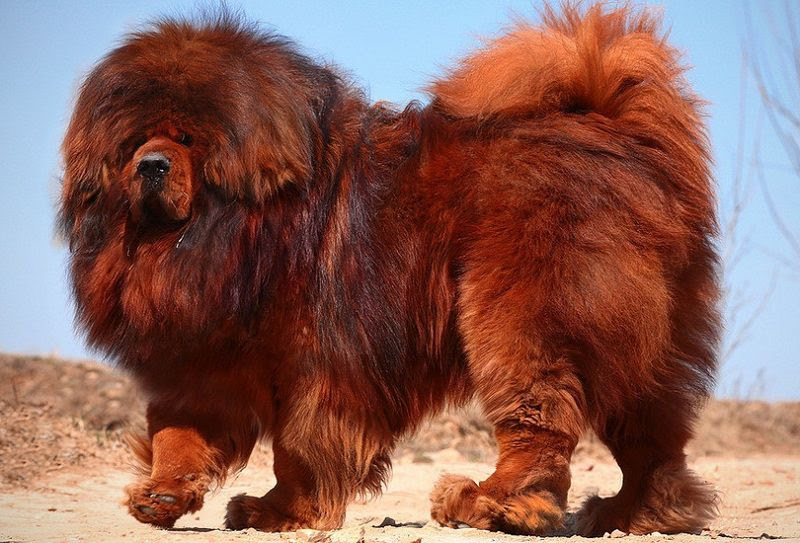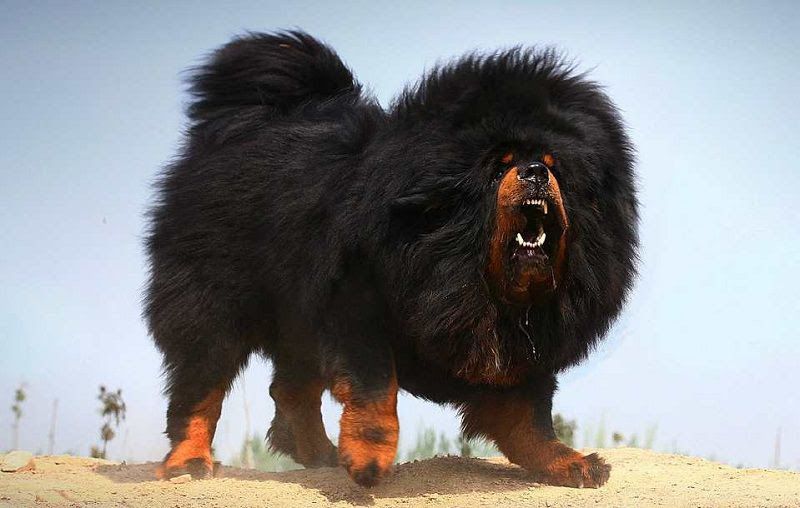Tibetan Mastiff characteristics
Tibetan Mastiff is extremely huge and is considered the world’s largest dog with a height of at least 70 cm and a common weight of 60 – 90 kg. One Tibetan Mastiff is recorded to weigh up to 110 kg and as high as 1.2m. Their body is strong and well balanced. The muscles, especially at the shoulders, chest, hips and thighs are well developed. However, Tibetan Mastiffs usually only achieve their “huge” size when raised in the Tibetan plateau in a harsh cold climate.
The Tibetan Mastiff has a very thick, long, thick coat that helps to defy all kinds of weather, adapting to the harshest weather conditions. The coat comes in black, black – brown, black – gold, black – white, brown, red, orange, gray or yellow.

Tibetan Mastiff has a very large head, with a flat forehead and no wrinkles. Their snout is large and square. The jaw is strong. The long ears hang down to the cheeks. The neck is thick and muscular. Their legs, muscles and tendons help them achieve exceptionally fast speed and a description of “faster than deer”. Their tail is long, hairy and often curled on the back.
Tibetan Mastiff temperament
Purebred Tibetan Mastiffs are absolutely loyal dogs. For all of their life, they only listen to one and only owner, who raises them from birth. With their wild instincts, Tibetan Mastiffs are also well known for being stubborn, hard to teach and hard to train. It takes a lot of patience to train them (This trait is only true to purebred Tibetan Mastiffs. Commercial Tibetan Mastiffs that are cross with other genes may not possess the same trait.). Considered ferocious dogs, they need to be strictly controlled if they are raised in populated areas.

The Tibetan Mastiff is always alert and ready to fight, able to attack intruders or someone that harms their owner’s family. At night, they often bark to the sounds from bypassers. With good training from a young age, the Tibetan Mastiff, to a certain degree, can become friendly with humans and other animals.
However, most of them are wary of everyone who does not belong to their family. They do not like herd life. Fights to claim territories often occur when they are raised near other large dogs (unless they were raised together from a young age).
>> You May Also Like:
- Tibetan Mastiff care. How to take care of Tibetan Mastiff puppies?
- Tibetan Mastiff dog price range. How much does a Tibetan Mastiff cost?
- Tibetan Terrier price range. Where to buy Tibetan Terrier puppies?
